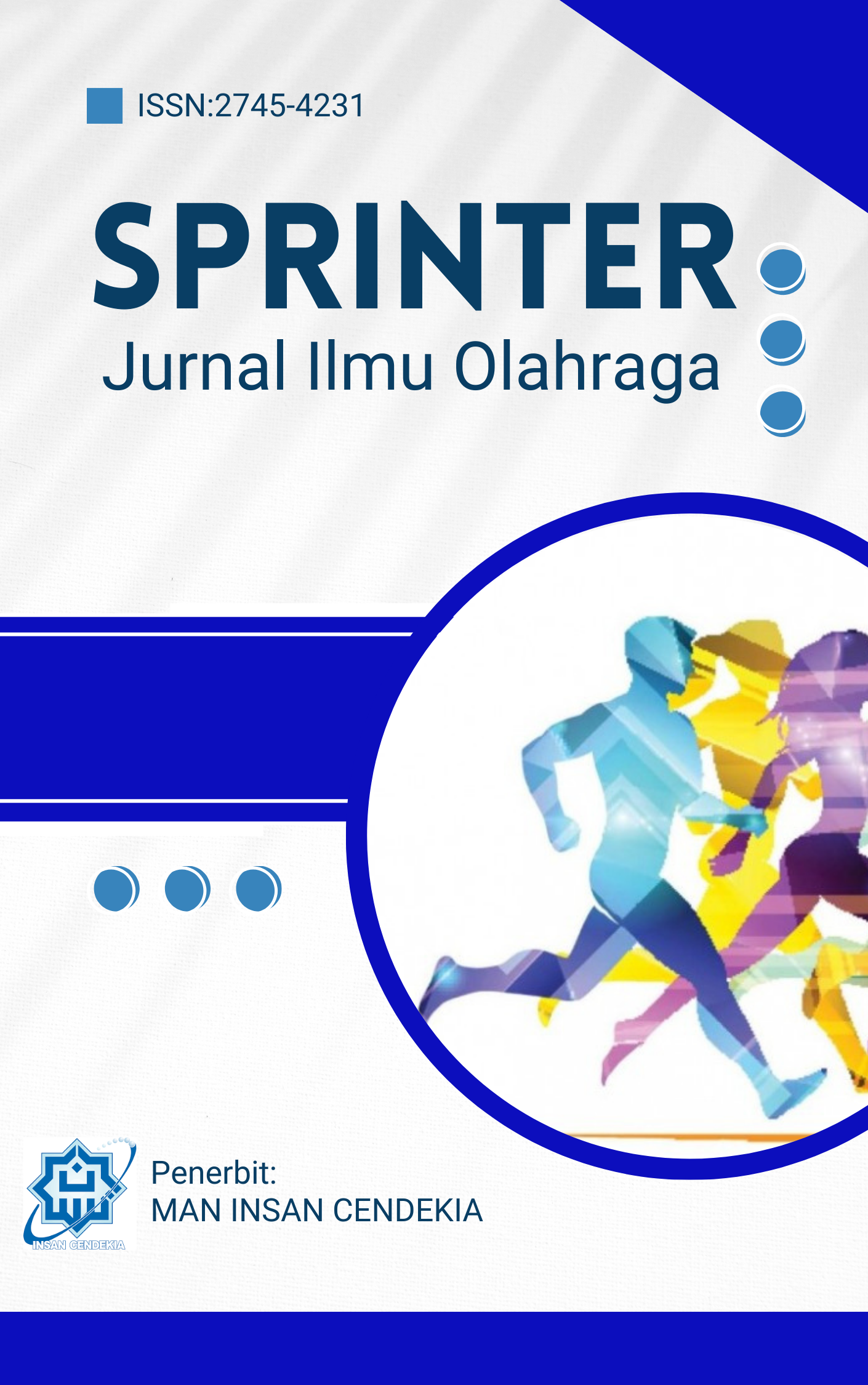Pengaruh Pembelajaran Diferensiasi dalam Pembelajaran Penjas Materi Bahaya Pergaulan Bebas
DOI:
https://doi.org/10.46838/spr.v6i2.791Keywords:
Differentiated Instruction; Physical Education; Learning Outcomes; Negative Peer InfluenceAbstract
This study aims to analyze the impact of implementing differentiated instruction on students' learning outcomes in Physical Education, Sports, and Health (PJOK), specifically on the topic of the dangers of risky social behavior. The background of this research is based on the importance of an instructional approach that aligns with students’ needs, interests, and readiness levels. The topic of risky social behavior emphasizes the development of values, attitudes, and decision-making skills, making differentiated instruction a relevant approach to create more meaningful learning experiences. This research employed a quantitative method with a one-group pretest-posttest design. The participants were students of class VIII B at SMPN 1 Jatiluhur. Data were collected through objective tests, observation, and documentation. The data were analyzed using descriptive statistics and a paired sample t-test assisted by SPSS software. The findings showed an increase in the average score from 72.78 (pretest) to 82.46 (posttest). The t-test results indicated a significance value of < 0.001, demonstrating a highly significant effect. Therefore, differentiated instruction proved to be effective in enhancing students' learning outcomes.
References
Altemueller, Lisa; Lindquist, C. (n.d.). Teacher Preparation for Differentiated Instruction. Journal of Education and Learning, 7(1). https://doi.org/10.5539/jel.v7n1p116
Creswell, J. W., & Creswell, J. D. (2023). Research Design: Qualitative, Quantitative, and Mixed Methods Approaches (6th ed.). SAGE Publications.
Creswell, J. W. (2020). Research Design: Qualitative, Quantitative, and Mixed Methods Approaches (5th ed.). SAGE Publications.
Fina, S. N., Suasti, Y., & Ernawati. (2025). Penerapan Pembelajaran Berdiferensiasi di Era Kurikulum Merdeka Untuk Meningkatkan Hasil Belajar. Jurnal Pendidikan Dan Pembelajaran, 15, 210–225. https://doi.org/10.1234/jurnal.pendidikan.2025
Firmansyah, A. (2019). Pendidikan Jasmani Sebagai Pendekatan Holistik dalam Pendidikan Karakter. Gramedia.
Gheyssens, Elke; Consuegra, Els; Engels, Nadine; Struyven, K. (2020). Differentiated instruction in secondary education: A systematic review of research evidence. Educational Research Review, 29. https://doi.org/https://doi.org/10.1016/j.edurev.2019.100302
Hartati, S. and Wahyuni, D. (2023). Implementasi Pembelajaran Berdiferensiasi dalam Pendidikan Jasmani untuk Meningkatkan Hasil Belajar Siswa. Jurnal Pendidikan Jasmani Indonesia, 9(2), 105–115.
Ibrahim. (2022). Metodologi penelitian kuantitatif: Konsep dan aplikasi. Universitas Terbuka.
Instrumen Penelitian Kuantitatif: Jenis, Contoh, Dan Cara Uji Validitas (2024).
Neuman. (2023). Social research methods: Qualitative and quantitative approaches (9 th). Pearson.
Prasetyo, A. dan Lestari, M. (2022). Model Pembelajaran Berdiferensiasi dalam Meningkatkan Pemahaman Materi Afektif Siswa SMP. Jurnal Ilmu Pendidikan Indonesia, 18.
Rosmi, T. (2024). Pendidikan Jasmani dan Karakter Anak: Pendekatan Holistik. ALFABETA, CV.
Sugiyono, P. D. (2019). Metode Penelitian Pendidikan: Kuantitatif, Kualitatif, Kombinasi (Mixed Methods), R&D, dan Penelitian Pendidikan. ALFABETA.
Tomlinson, C. A. (2011). Differentiate instruction in mixed-ability classrooms.
Valiandes, S. Neophytou, L. (2018). Teachers’ professional development for differentiated instruction in mixed-ability classrooms: Investigating the impact of a development programme on teachers’ professional learning and on students’ achievement. Teacher Development, 22(1), 123–138. https://doi.org/10.1080/13664530.2017.1338196
Zainuddin Iba; Arief Wardhana. (2024). Operasionalisasi variabel, skala pengukuran & instrumen penelitian kuantitatif. Eureka Media Aksara.
Published
How to Cite
Issue
Section
Copyright (c) 2025 Radela Ryan Tiffani, Rekha Ratri Julianti, Abdul Salam Hidayat

This work is licensed under a Creative Commons Attribution-ShareAlike 4.0 International License.









